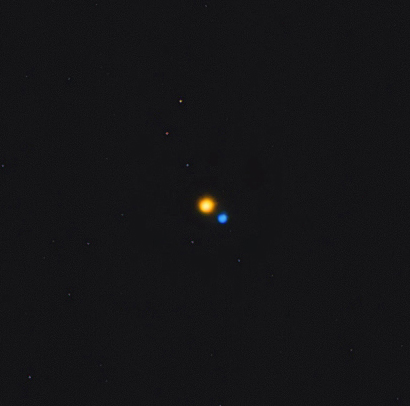The Color Purple
It has been mentioned before that stars have colors. Interestingly, one person’s perception of a star's color may differ from another's. Both physiological and psychological makeup determines this. http://hyperphysics.phy-astr.gsu.edu/hbase/vision/rodcone.html
*Psychological color perception can result from suggestion. As you look through a telescope at a star, the scopes owner may say, “Look at that blue star on the right.” You will be predisposed to seeing blue.
*Atmospheric conditions can be another reason for seeing stars in varying hues. Pollution will mute or obliterate the true color of the star.
*Using different telescopes and at different magnifications will alter a star’s brightness and color.
*When stars are part of a system of stars such as double stars, the color of one companion can, by contrast, heighten the apparent color of the other.
Physiological color sense depends on cones in the eye, centrally placed in the retina. However the eye’s ability to adjust to the dark takes time. http://www.aoa.org/x5352.xml
Other factors such as the pupil’s contractibility, spectral sensitivity, and photochromatic intervals affect night color vision, not to mention the retina’s central blind spot.
So where does the color purple come in. Several impressive star systems have purple stars. Of course, some observers see these stars as blue stars, or colors ranging from blue to purple.
Here are my visual favorites:
Eta Cassiopeia holds greater interest than a telescopic view. It’s the stuff of Trekkie movies.
The Eta Cassiopeia star system is heavily studied by NASA, because Cassiopeia A is so similar to the sun, it could possibly be orbited by terrestrial planets like earth.
A similar double star with an orange main star and a purple companion is Epsilon Bootes. http://en.wikipedia.org/wiki/Epsilon_Bo%C3%B6tis
All the images of these three stars systems can be viewed in the link located directly below the title of this blog entry.
All the images of these three stars systems can be viewed in the link located directly below the title of this blog entry.

No comments:
Post a Comment